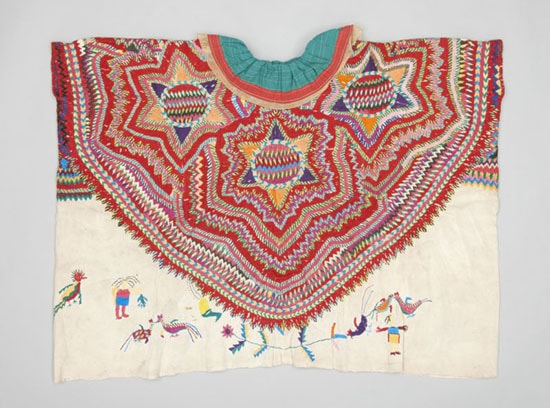The Reach Gallery Museum Abbotsford starts its arts year on Jan. 22 with two highly touted exhibitions – Ancestry and Artistry: Maya Textiles from Guatemala and Decolonize Me.
The Maya Textiles exhibition, organized and circulated by the Textile Museum of Canada, integrates the work of contemporary artists Andrea Aragón, Verónica Riedel, and photo journalist Jean-Marie Simon.
Whether worn for religious ceremonies or as an emblem of ethnic pride, textiles offer a medium for innovation and creative expression, as well as a marketable product for the tourist industry. The exhibition is made possible through the sponsorship of Keystone Architecture and Planning Ltd. and Hallmark of Abbotsford Corp.
Decolonize Me features six contemporary aboriginal artists whose works challenge, interrogate and reveal Canada’s long history of colonization in daring and innovative ways: Sonny Assu, Laich-kwil-tach, Kwakwaka’wakw, Vancouver; Jordan Bennett, Mi’kmaq, Stephenville Crossing, Newfoundland; Heather Igloliorte, Inuit, Nunatsiavut, Labrador; Cheryl L’Hirondelle, Métis / Cree, Toronto; Nigit’stil Norbert, Gwich’in, Yellowknife; Barry Pottle, Inuit, Nunatsiavut, Labrador; and Bear Witness, Cayuga, Ottawa.
Deliberately riffing on the title of Morgan Spurlock’s film, the pop-cultural phenomenon Super Size Me (2004), the exhibition’s title emphasizes the importance of recognizing the role of the individual within larger discussions of shared colonial histories and present-day cultural politics.
In context of the recent efforts of many indigenous communities to assert their sovereignty and right to self-determination, the artists in this exhibition explore the issues and outcomes of both colonization and decolonization. Simultaneously, they expose how these processes have impacted aboriginal and settler Canadian identity, both individually and collectively.
There is a third exhibition at The Reach: 100 Years of Loss: The Residential School System in Canada. It explores aboriginal children in Canada who were taken from their homes and communities and placed in institutions called residential schools, beginning in the mid-1800s and continuing into the mid-1990s.
100 Years of Loss is one of three exhibitions developed by the Legacy of Hope Foundation, a national, charitable aboriginal organization whose purpose is to educate and create awareness and understanding about the legacy of residential schools, and continue to support the ongoing healing process of residential school survivors.
The official reception will be held on Jan. 22 at 7 p.m., and will include an opportunity to meet the new curator of The Reach, Laura Schneider, who joins the team all the way from Cape Breton University Art Gallery in Nova Scotia.
The Reach will also host a number of public programs that connect to these winter exhibitions. For more information, visit thereach.ca.
